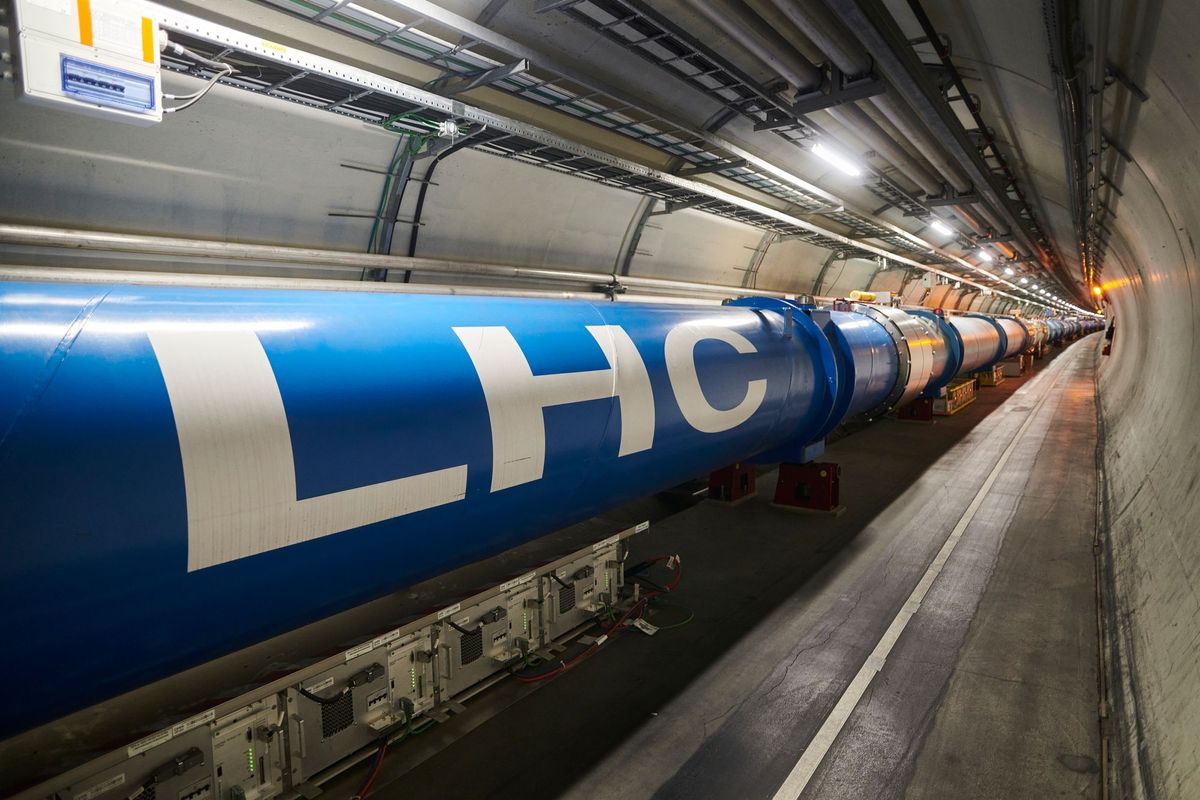The Large Hadron Collider Is Back and Ready to Hunt for Dark Matter
We spoke to the head of operations at CERN to find out what it takes to fire the collider back up after a brief hiatus for upgrades and maintenance.

In the control room at CERN (The European Center for Nuclear Research) is a row of empty champagne bottles. Scientists popped open each one to celebrate a successful landmark, like the discovery of the Higgs boson particle, the long-elusive particle that gives all other subatomic particles their mass.
Rende Steerenberg, CERN’s head of operations, hopes to toast coworkers with another bottle in July when the Large Hadron Collider (LHC) is expected to achieve its next milestone: operating with a record-setting high-energy beam. Combined with a higher rate of proton collisions, the new setup will allow scientists to further investigate the Higgs boson after its discovery in 2012. Physicists especially look forward to the possibility of ushering in a new era of physics with the discovery of particles that could explain dark matter.




